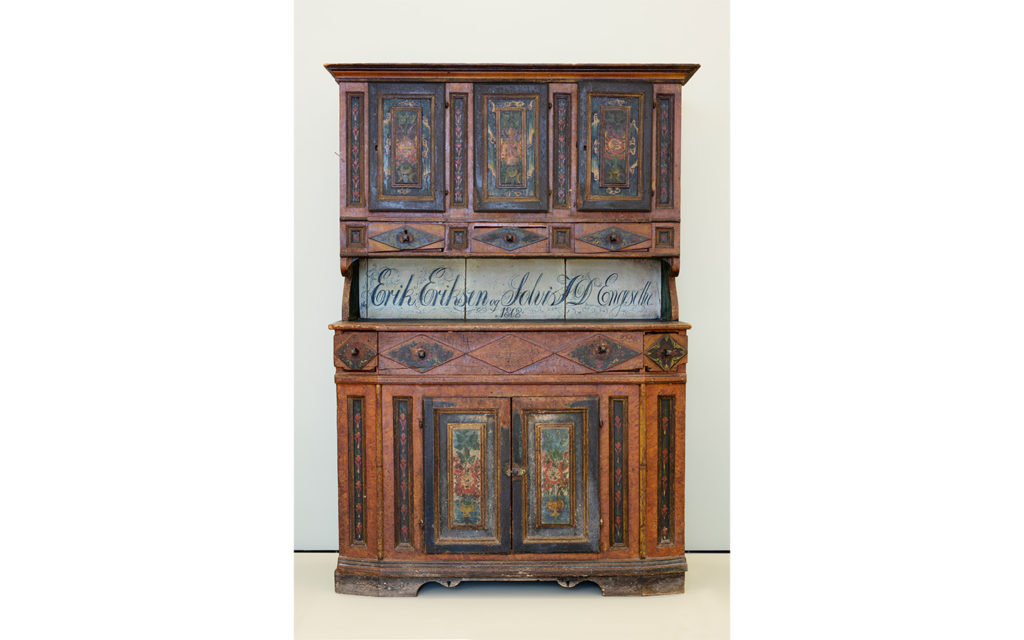What is it?
Artist
Painting by Marit Oline Lie Skogen (Valdres, Norway 1830–1884 Mount Horeb)
Cabinetwork by Aslak Olsen Lie (Valdres, Norway 1798–1886 Mount Horeb)
Title
Cupboard (Skåp)
Year
1868
Medium
Wood (pine), paint, and brass
Dimensions
81 x 54 x 18 in.
Credit line
Purchased 2015, Helen and Joseph Lai (From the Isak Dahle Little Norway Collection)
About the Work
About
Recently identified as the only known nineteenth-century female painter in Norway of rosmaling (rose painting, a traditional Scandinavian folk art), Marit Oline Lie Skogen began painting in Norway as a teenager under the tutelage of her father and an uncle, both cabinetmakers. She came with her parents to Wisconsin in 1848, where her family launched the Blue Mounds settlement of Norwegian immigrants in Mount Horeb (formerly Klevenville), west of Madison. By 1852, she was rose painting in earnest, working alongside her father, Aslak Olsen Lie, in his cabinet shop. She was especially skilled at decorative patterns, calligraphy, and rose painting, as well as grain and sponge painting.
This cupboard, a very similar one in the Minneapolis Institute of Arts, and possibly a third example were commissioned in 1868 by Erik Eriksen Engesaether from DeForest, Wisconsin, northeast of Madison, for his three sons. The artist probably knew the cupboards’ recipients from the years she resided for financial reasons with her uncle in Leikanger, a small town in Norway where the Eriksen family had also lived.
Fabricated in an early nineteenth-century style associated with Leikanger, this cupboard would have been out of fashion by the time it was made in 1868; the rosmaling similarly evokes an earlier painting style characteristic of the Valdres district around 1800. Engesaether may have intentionally commissioned the cupboards in an earlier style as reminders to his sons of their Norwegian heritage. Like so many early European immigrants to Wisconsin, maintaining tradition was an important part of preserving ethnic identity in the new world.

